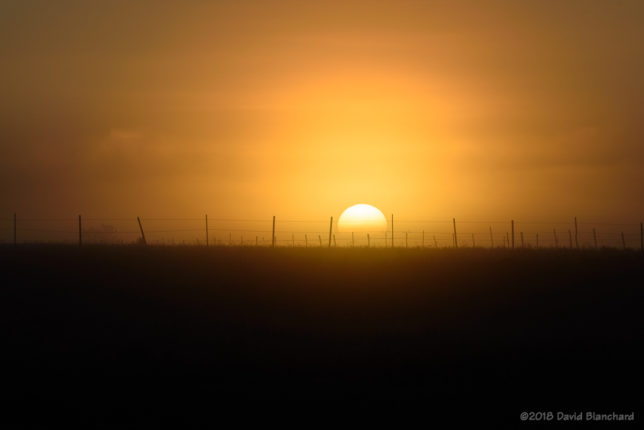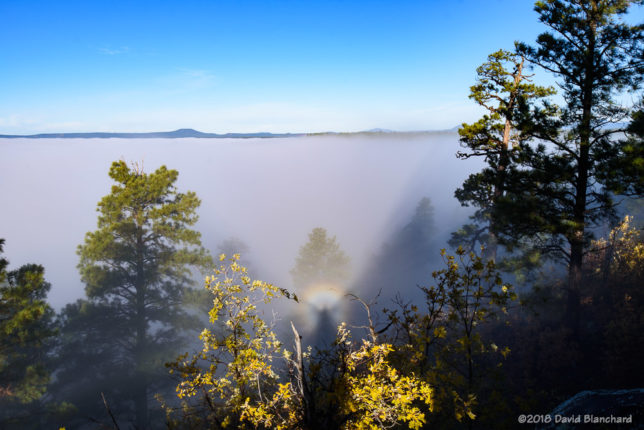
A few days ago we had a cold front move across the area and overnight temperatures fell below freezing for a few hours in the higher terrain. It turns out that October is a good month for fog formation from these first frontal incursions. Area lakes still have relatively warm water from the recently ended summer. The passage of the cold air over the warm water allows for increased moisture flux from the warm water into the colder air that increases the dewpoint (and relative humidity) and can result in fog. Also, the shorter days–and longer nights–allows radiation fog to develop in the valleys.



With that in mind, I found myself driving past Lake Mary to Mormon Lake before sunrise on Tuesday morning. As I approached Lake Mary visibility dropped quickly to 1/4 mile, then 1/8 mile, and then 1/16 mile. Visibility improved once I passed both Lower and Upper Lake Mary. At Mormon Lake, there was fog swirling in the basin and the rising Sun was just starting to illuminate the summits of the San Francisco Peaks.


After the fog dissipated in Mormon Lake, I returned to Lake Mary where the fog was still present and I was able to capture fogbows plus a nice photo of a sailboat anchored in the lake.
Time-lapse video of the swirling fog in the Mormon Lake basin.
Time-lapse video of the swirling fog and glory in the Mormon Lake basin.
The time-lapse videos show remarkable motion of the swirling for over Mormon Lake as well as the colorful but diffuse glory that was present.
A very fun morning.
Fog definitions from Weather.gov:
(1) Steam fog (arctic sea smoke). Steam fog forms when water vapor is added to air that is much colder, then condenses into fog. It is commonly seen as wisps of vapor emanating from the surface of water. This fog is most common in middle latitudes near lakes and rivers during autumn and early winter, when waters are still warm and colder air masses prevail.
(2) Radiation fog (ground or valley fog). Radiational cooling produces this type of fog. Under stable nighttime conditions, long-wave radiation is emitted by the ground; this cools the ground, which causes a temperature inversion. In turn, moist air near the ground cools to its dew point. Depending upon ground moisture content, moisture may evaporate into the air, raising the dew point of this stable layer, accelerating radiation fog formation.













